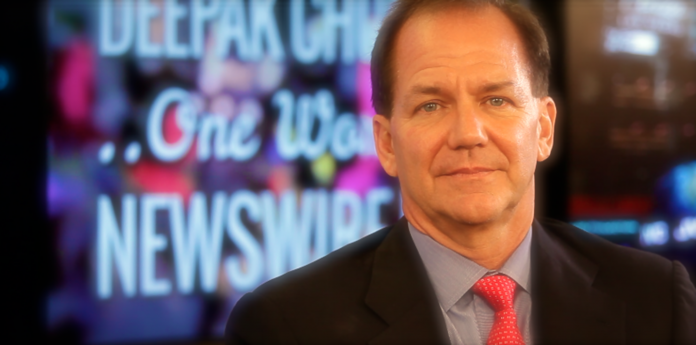Stocks traded higher this morning as bulls looked to build on yesterday’s intraday swing. The Dow, S&P, and Nasdaq Composite all rose significantly through noon. It was a welcome change for “buy and hold” investors who watched in agony as the market plummeted last Friday.
But today’s bullish enthusiasm wasn’t shared by all. Before the market opened, billionaire hedge fund manager Paul Tudor Jones issued a dire warning in an interview with CNBC.
“You can’t think of a worse macro environment than where we are right now for financial assets,” Jones said.
“Clearly you don’t want to own bonds and stocks.”
He continued, adding:
“I think we’re in one of those very difficult periods where simple capital preservation is I think the most important thing we can strive for” and “I don’t know if it’s going to be one of those periods where you’re actually trying to make money.”
Dour remarks from the man who accurately predicted a crash back in January 2020, when Covid was first spreading in China, roughly one month before stocks plummeted.
Jones was then asked how he would invest moving forward considering the current macro environment.
“If there was a strategy that I would want to employ right now, if someone put a gun to my head, I’d say simple trend-following strategies. They are not too popular today. […] They will probably do very well in the next five to ten years.”
Prior to calling the Covid crash over two years ago, Jones rose to hedge fund stardom after he predicted (and profited handsomely from) 1987’s stock market crash.
And if you’ve read any of our market commentary over the last few months, you’d know that our in-house analysts agree wholeheartedly with Jones. We warned in December of last year that the “buy and hold” crowd could be facing major pain in 2022 with a series of stiff rate hikes on their way.
Now that rates are rising faster than expected, that pain is set to intensify further in the long run.
The Fed’s May meeting began this morning. It concludes tomorrow afternoon and investors expect a 50 basis point hike from Fed Chairman Jerome Powell. If Powell comes in with a weaker rate increase, stocks could easily surge in response.
But Morgan Stanley’s Jim Caron believes that, if a surprise is truly coming, it will be more hawkish – not dovish – than anticipated due to galloping inflation from non-price-related sources.
“I think they’re going 50 [basis points], and it seems like they’re dead set on hiking rates enough to kill inflation,” Caron said.
“But that’s the real debate. Are they trying to get to target inflation by 2024? If they are, the wage inflation is pretty high and that will require even more tightening than the Fed is projecting.”
For several months, stocks were in “bad news is good news territory.” The market thought that an impending recession would cause the Fed to lower rates once more.
It became clear last month, however, that the Fed is intent on hiking rates no matter what. Stocks seem due for a bounceback in May, but it probably won’t snowball into a longer-term bull market continuation. And that kind of price action – short-term rallies followed by bearish continuations – is what trend-following traders love. Who, according to Jones, are the investors positioned to snag outsized gains over the next “five to ten years.”








